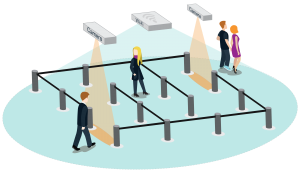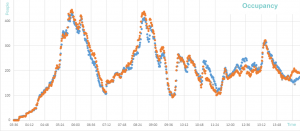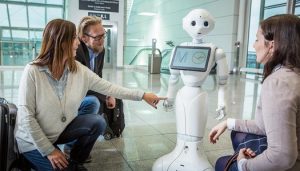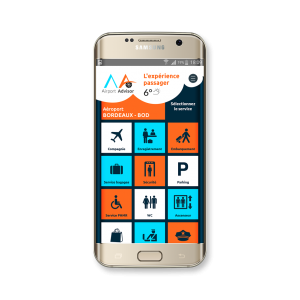Most queue-management systems
today work on either WiFi or camera technology, each of which comes with its unique benefits and disadvantages. Imagine what is possible when you combine the two.
Combining and refining existing technologies to take maximum advantage of their benefits, while at the same time reducing – or even eliminating – the negatives, provides the perfect opportunity to bring real change to the market. That is why we are excited to propose a market-leading hybrid Cam/Wi-Fi solution, which does just that.

Sensors, whether camera or WiFi-based, are costly to install and calibrate, and there is a direct correlation between numbers, cost and lead-time. In other words, keeping the volume to a minimum while maintaining a high accuracy level is in everybody’s interest.
Thanks to sophisticated data fusion, the hybrid Cam/WiFi solution can calculate occupancy numbers with high precision, thereby minimising the number of camera installations, while still achieving near 100% penetration. Also, robust queue time measurements, as well as state-of-the-art, predicted waiting times can be presented.

Orange curve: Occupancy based on manual in/out counts. Blue curve: Occupancy based on the BlipTrack Cam/WiFi Hybrid solution.
The BlipTrack Cam/WiFi hybrid combines the strengths and minimises the disadvantages of two independent technologies, giving you a solution that:
+ provides high accuracy as with a pure camera-based solution, but at a significantly lower cost due to fewer instalments;
+ thanks to fewer instalments, is quicker to implement and faster to calibrate;
+ has a >95% sample rate, which is more than adequate for measuring occupancy and queue;
+ robust to ceiling heights and obstructive views and;
+ does not require a dedicated network for sensor connectivity;
Solutions to measure occupancy and queue times do not need to result in cameras taking up every available corner, nor do they need to be prohibitively expensive. By using the right combination of cameras and WiFi sensors, we are helping make sure that the passenger experience is smoother, quicker and much more pleasant.
source : https://tinyurl.com/y7fbb9ke






